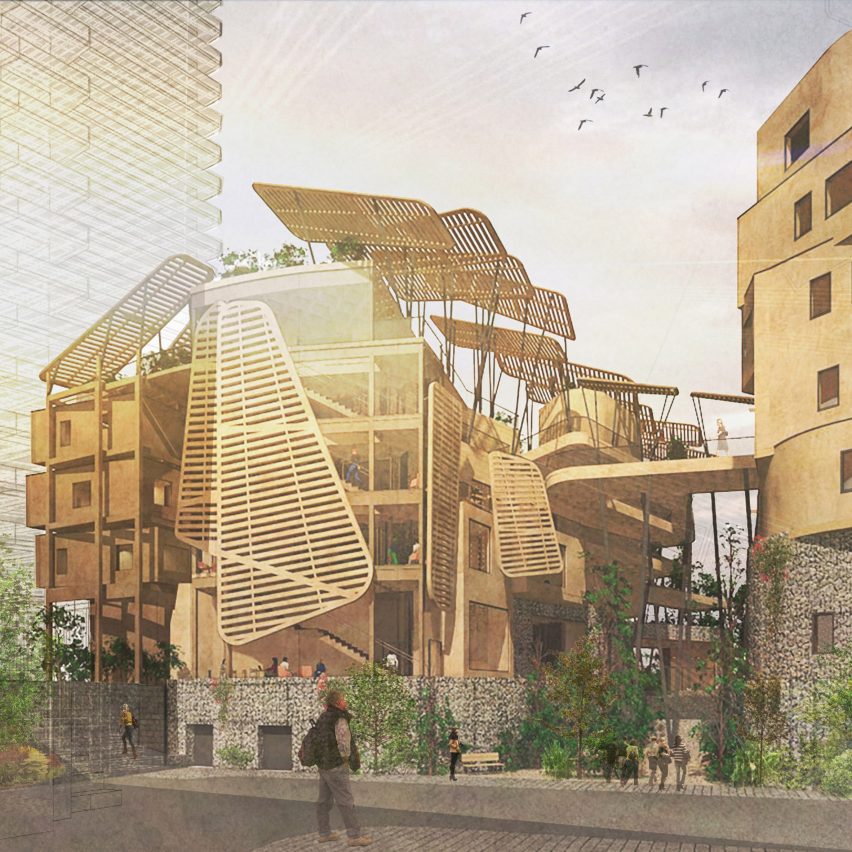
Projects from London South Bank University's architecture students, presented here as part of their VDF school show, work to improve the social fabric of the capital's neighbourhoods and envision new purposes for the Eero Saarinen-designed US Embassy.
The 19 concepts presented below were created by students across the school, spanning graduates and undergraduates, part- and full-time students as well as apprentices.
According to the programmes' tutors, the unifying aim across the projects, as with all architecture, is "not only to serve society but to improve it for the better".
BA and MArch Architecture, London South Bank University
University: London South Bank University
Courses: Bachelor of Art in Architecture and Master of Architecture
BA Architecture course statement:
"Undergraduate study of architecture at LSBU is supported by an intensive design studio culture, creating opportunities to engage in staff practice and research interests while learning in teams that include practitioners, subject specialists in technology and history as well as visiting critics. Learning is underpinned by public talks and events (notably the LSBU Open Lecture series, now in its fourth season), field trips and the RIBA Mentoring Programme.
"Our school's strong links with the industry, professional bodies and the wider architectural community have been enhanced by our architectural assistant undergraduate apprenticeship, which makes LSBU the largest provider of architecture apprenticeships in the UK.
"Design remains our core activity and our undergraduate studio system offers students even greater choice in developing their particular interests in architecture. The range of topics discussed and our exceptional on-site facilities reflect a dynamism in our teaching and acknowledge the diversity of our students."
Master of Architecture course statement:
"Postgraduate study at LSBU proposes that architecture is a passion, rather than a means to an end. It requires empathy, diligence and poetics for us to engage critically with the current affairs of the discipline, which goes far deeper than the act of building. It is no coincidence that we 'practice' architecture, because can anyone ever profess to have had too much time to design or been able to utterly exhaust the possibilities of the context for which they are designing?
"Master's level study is essential to architectural education, as it embraces these opportunities to establish a position on our contemporary situation. The 21st century presents more complex challenges than before, as environmental, social, political, economic and technological factors influence the way we interpret the world.
"At LSBU, we believe that the dedication and ideas of students, as the future generation, will change the way we live. To be an architect we have to be professional, responsible but above all compassionate. Fundamentally our role is to not only to serve society but to improve it for the better."
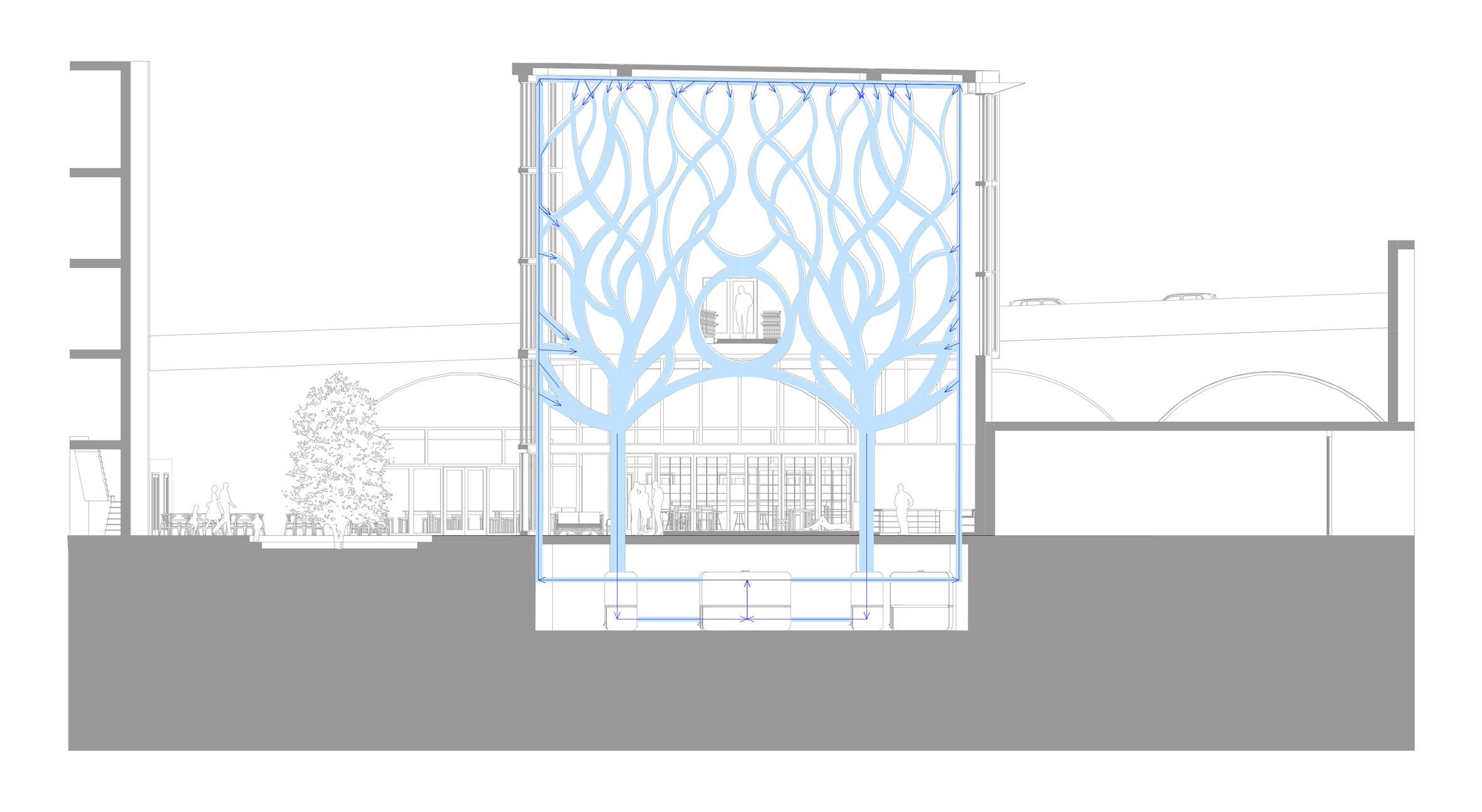
Edible Marsh by Kate Rutland, first-year BA apprentice
"What can the high street offer that the internet can not? The high street is all about the experience: sight, smell, sound, taste and touch. Every environment is unique. Like our fingerprints, no two are identical. My proposal allows all these senses to be explored through the lifecycle of a vegetable, from seed to plate and compost.
"Edible Marsh provides fresh and sustainable vegetables to the local community of Lower Marsh in Central London. The vegetables are grown on a tree-shaped structure via a hydroponic system that only requires a nutrient solution and water for the plants to grow."
Email: katerutland@outlook.com
Website: katerutland.webador.co.uk
Project: katerutland.webador.co.uk/edible-marsh
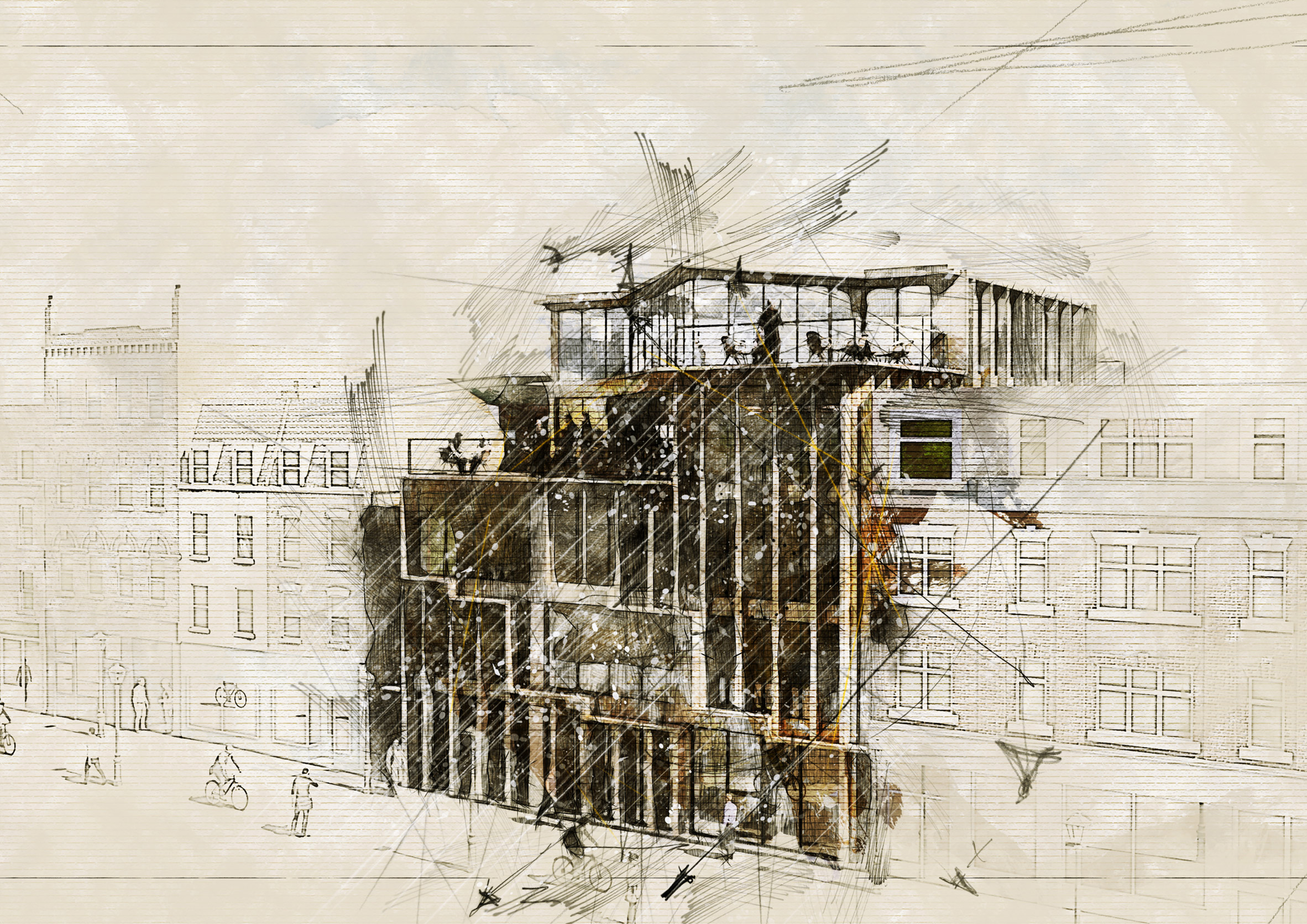
The Lower Marsh Escape Room by Miroslav Hristov, first-year part-time BA student
"Teeming with social, cultural and architectural value, Lower Marsh has lost its spirit due to the lack of opportunities for social connection. As a result, many shops in Lower Marsh Market, one of London's oldest and best-loved market streets, have closed over the past years.
"The Lower Marsh Escape Room is an attempt to revive this spirit and rejuvenate the location. The proposal includes a public area and commercial premises intended to offer a variety of social activities. The main goal is to facilitate emotional and physical connection between the local community and the tourists."
Email: miroslav_hristov@yahoo.com
Portfolio: behance.net/hristovmiroslav
Project: behance.net/gallery/the-lower-marsh-escape-room

Lower Marsh Labyrinth by Rory Thrush, first-year BA apprentice
"This project focuses on an assembly space that enriches the local community and market, while also incorporating the urban rituals of the street's visitors. The building is inspired by colours, labyrinths and Mark Wallinger's London Underground artwork. It encompasses a multifaceted cultural space, as well as spaces for users to pass through and congregate.
"The project takes the form of a changeable metropolis of market stalls and pop-up units as well as an outdoor cinema space that ensures slower movement, exploration and discovery. Configuring levels, routes and shop spaces enriches people's regular routine, creates links between spaces and people and separates the experiences from that of online shopping."
Email: rory.thrush@btinternet.com
Website: thrushr.wixsite.com
Project: thrushr.wixsite.com/lowermarshlabyrinth
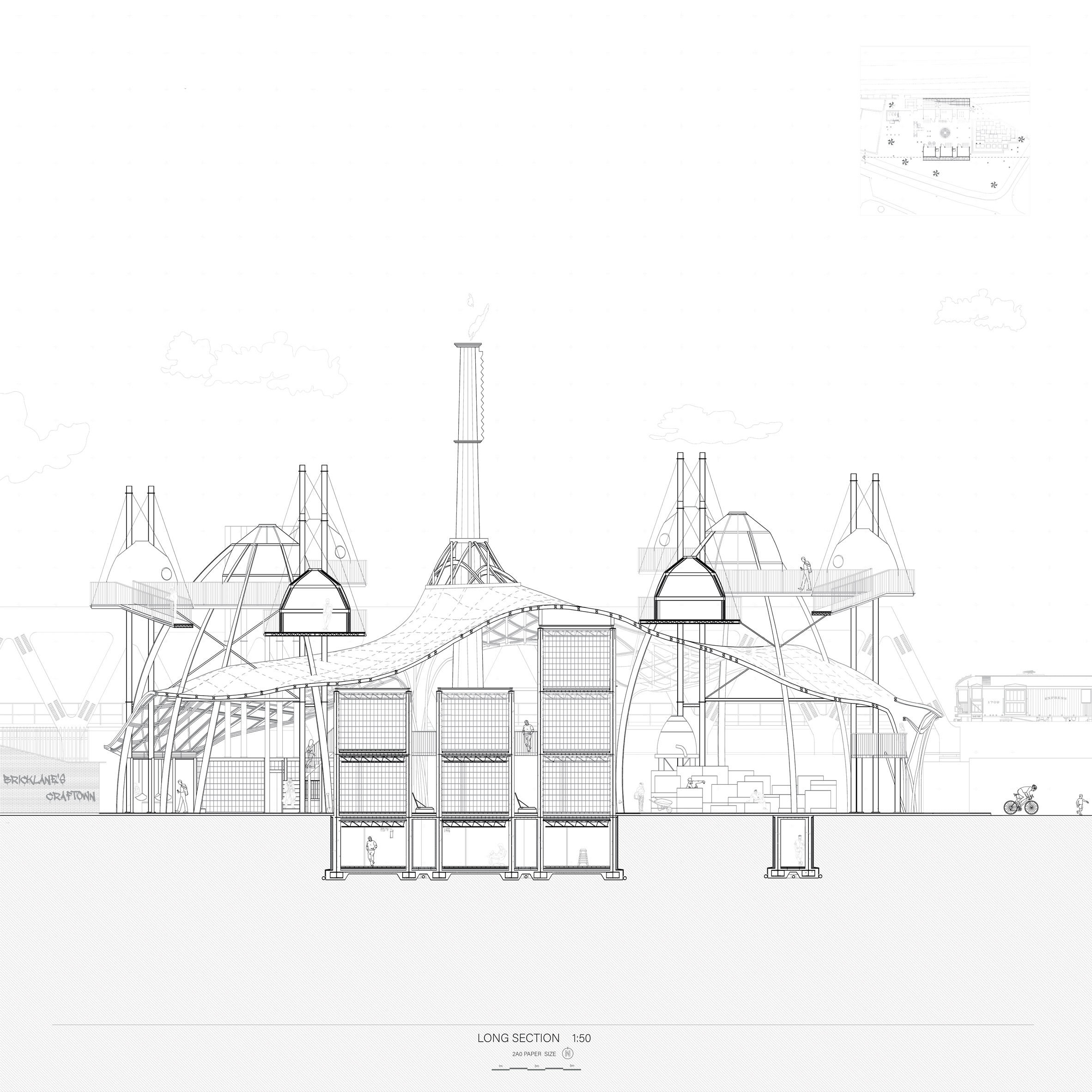
Craftown by Desislava Cholakova, second-year BA student
"Craftown is a micro-village in London's Brick Lane aimed towards creative professionals, where users can benefit from both communal and private spaces in which to work and live. It is a revival of craft in Brick Lane, educated by local creatives and inspired by the area's history as a weavers' neighbourhood in the 17th century.
"Although the units are interconnected, each serves a particular industry. Inhabitants are able to customise their space using kinetic, time-based architectural elements. Shafts of light are welcomed to the village throughout the day to signalize the time for specific activities."
Email: desi.cholakova@abv.bg
Website: desislavacholakova.com
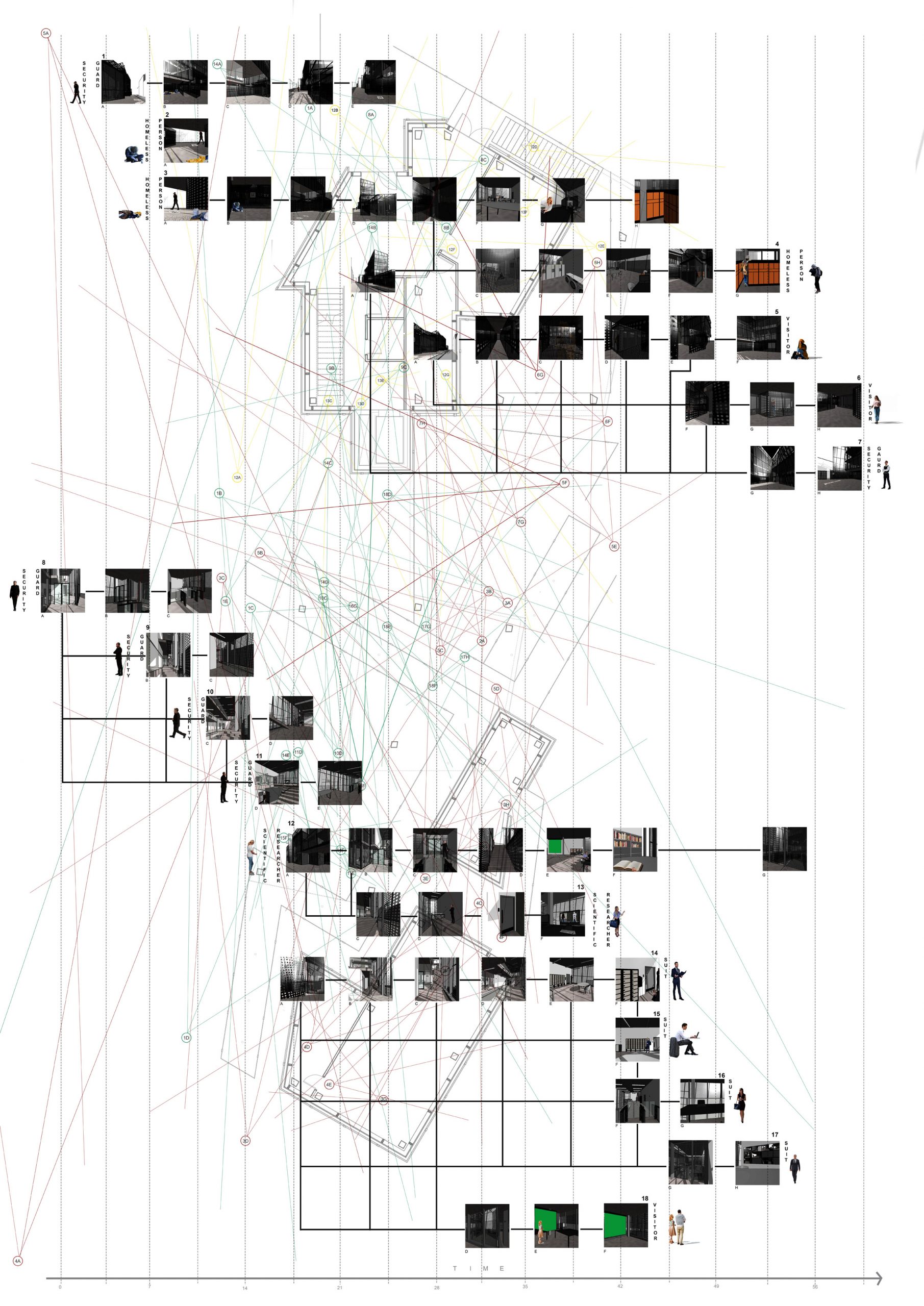
The Parade of Despotism by Jessica Winyard, third-year BA student
"The Parade of Despotism is primarily a digital centre, which both harnesses and develops biometric and blockchain technology to facilitate control in the form of totalitarianism. The building also provides for those with little control, namely the homeless.
"The building is used to develop and store a small communication device. This combines the 'Hobo Code' with popular navigation app Waze, to facilitate a virtual urban homeless network. The building's design contrasts untouchable governmental control with the life of homeless people, presenting moments of interaction and segregation while expressing the inherent irony of the design through the building's layers and transparencies."
Email: jessica_winyard@yahoo.com
Website: jessicawinyard.wixsite.com
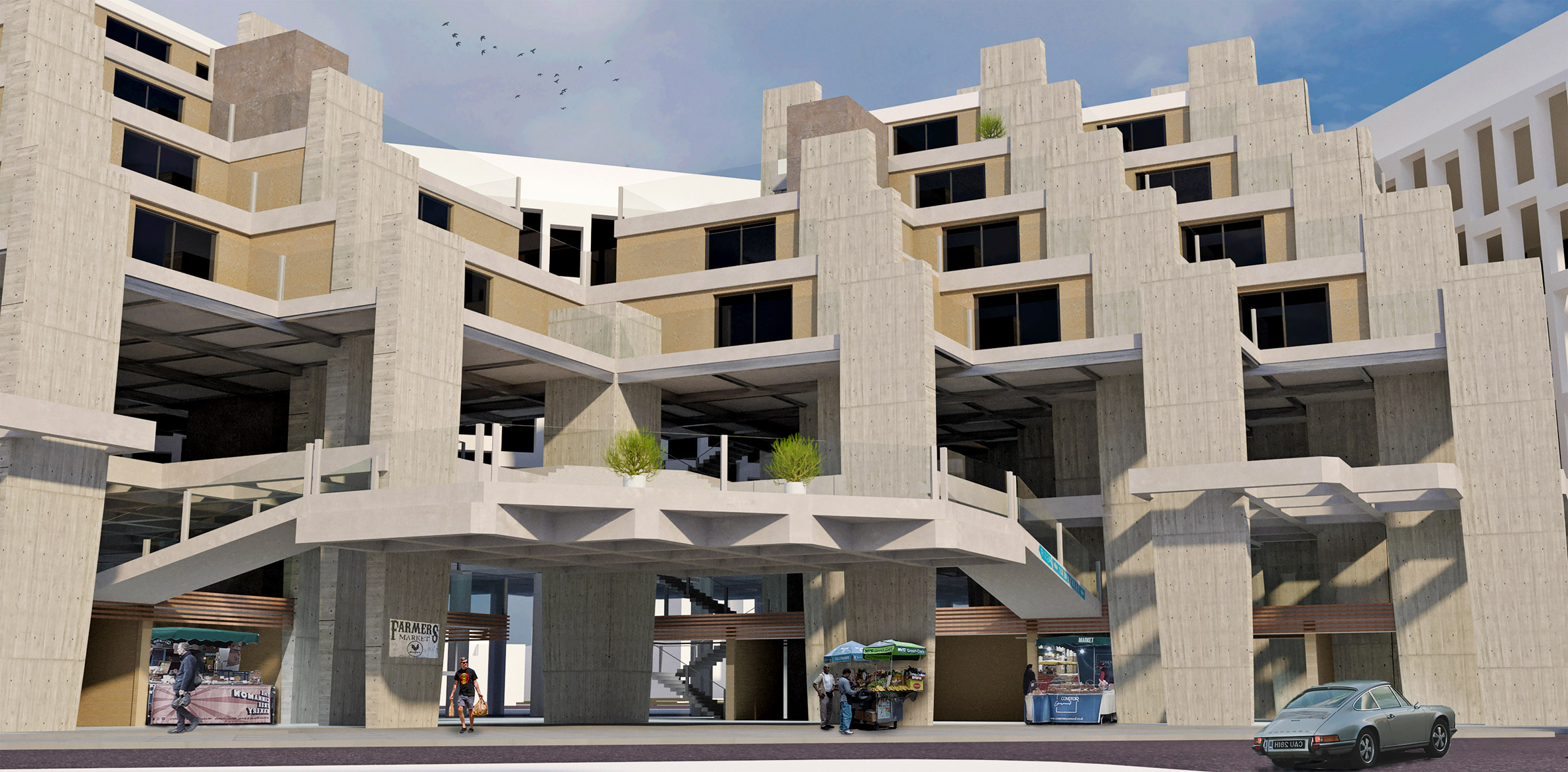
Embassy Island Residential Scheme and Market by Alan Clarke, third-year BA student
"This proposal is for a seven-storey, mixed-use development, which rises organically from the geometry of its host building. The scheme is connected yet separated from the existing fabric of the Eero Saarinen-designed US Embassy in Mayfair, creating an urban island in Central London.
"The active frontage of the scheme draws users into the market area and invites passers-by to engage with the building. Meanwhile, the residential levels allow for connections to be made between residents, creating a community in the sky above Mayfair. The project is focused on providing an architectural framework, in which these interactions can be encouraged and nurtured."
Email: alanclarke.85@gmail.com
Website: aalanclarke.tumblr.com
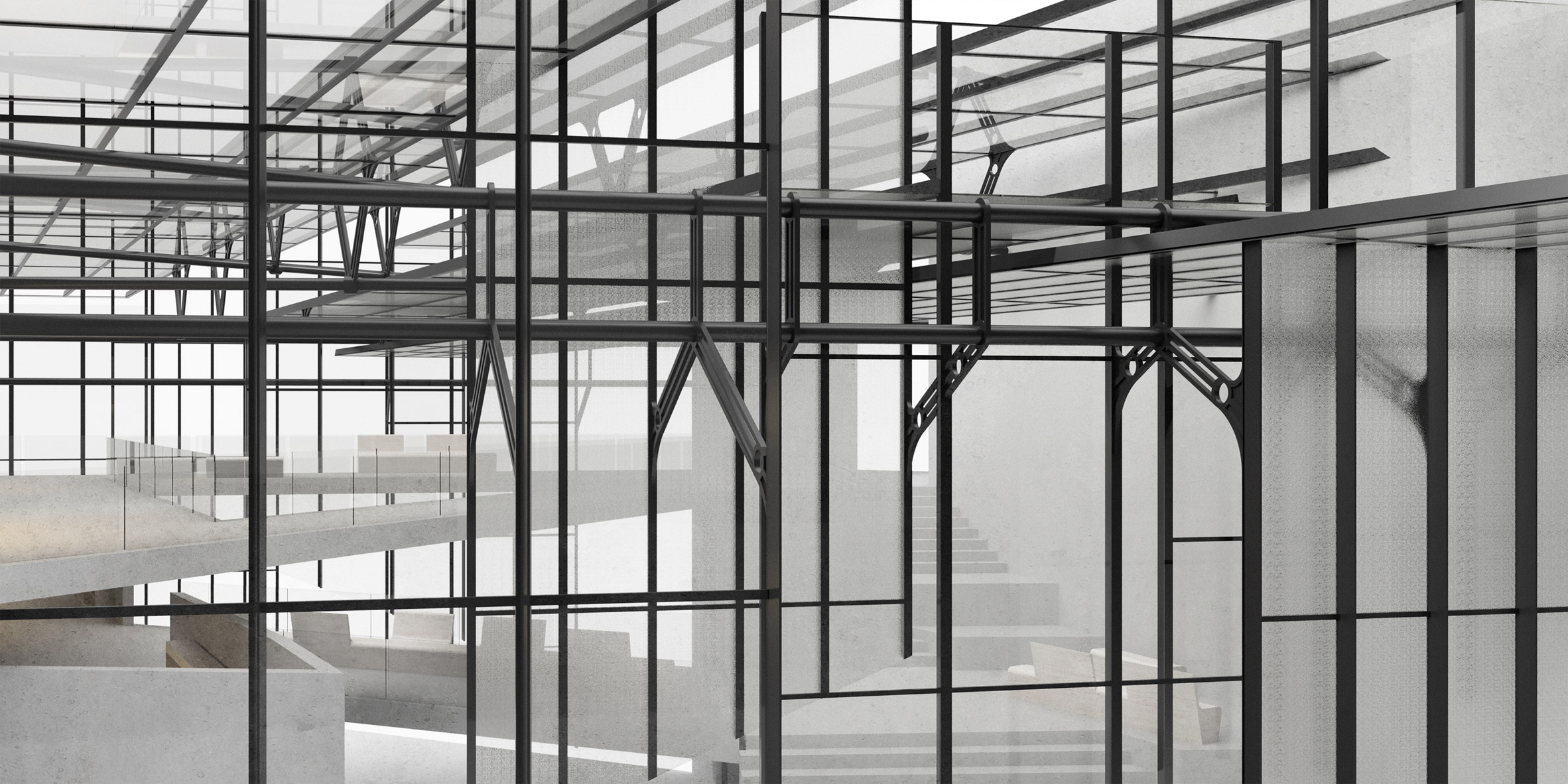
The Institute of Architecture by Timothy Percival, second-year part-time BA student
"The Institute of Architecture as a public resource has the responsibility to be accessible, valuable and progressive, motivating both the architectural community and the general public to engage in architectural discourse. The institute's physical presence must act as a representation of these responsibilities while being rooted in its locale.
"The digital institute, however, must strive to overcome physical context by offering a global island chain, a kind of digital archipelago. The Kingsland Institute of Architecture addresses both the physical and digital, providing an accessible space to explore spatial ideas and to embrace new technologies for an ever-changing profession."
Email: timothy@percivalstudio.com
Website: percivalstudio.com
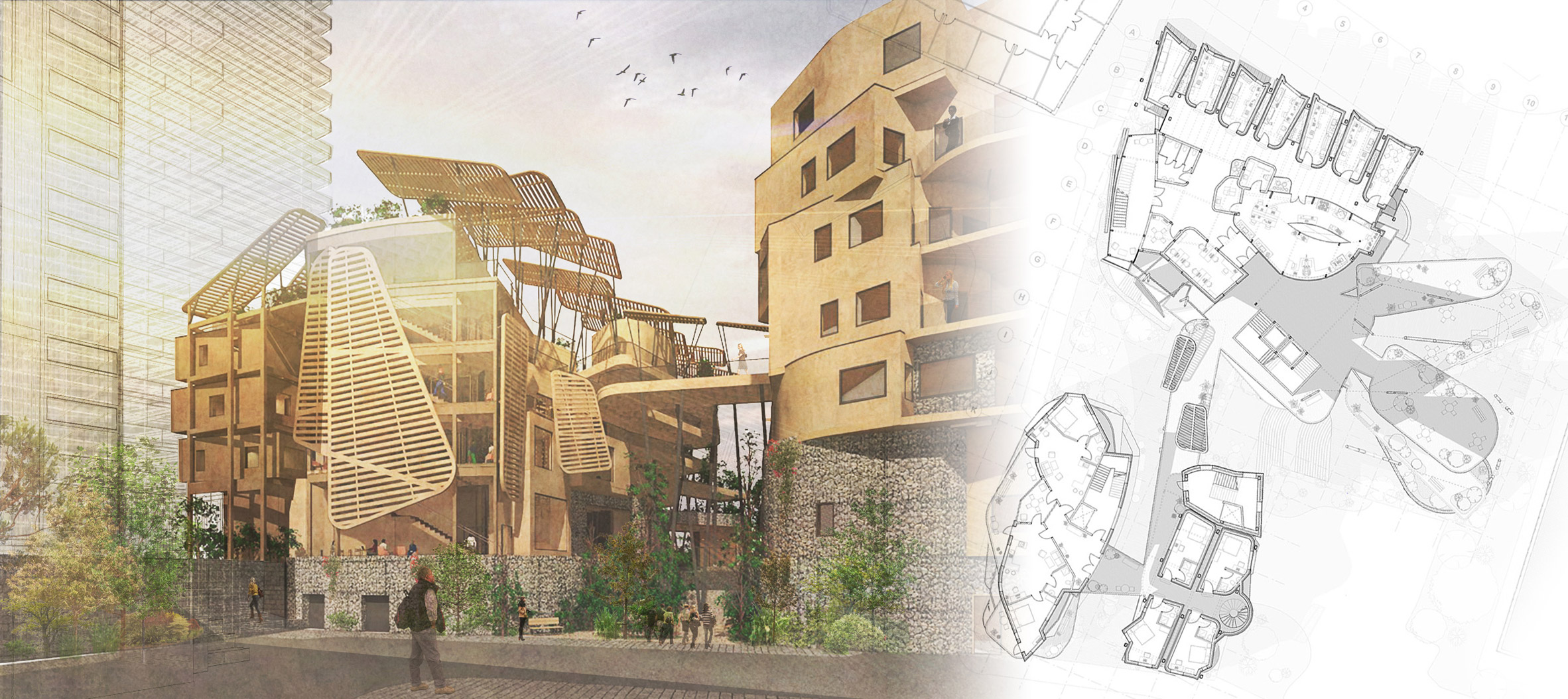
Live-work Synthetic Biology Research Centre by Daniel Graham Stokes, fourth-year BA apprentice
"The current, rapidly changing nature of the UK economy, alongside the shortage of affordable housing, is the driver for innovative hybrid accommodations in the city that accommodate living and working, as well as business and commercial spaces.
"This proposal is designed for an emerging synthetic biology start-up and creates research and manufacturing facilities to help a growing base of designers and experimental material scientists to work outside of the existing confines of industrial corporations and academic institutions. Seeking a balance between private and public spaces, the project takes an organic, materiality-focused approach to structural expressionism, with a strong focus on integrating the high-tech within inner-city naturalism."
Email: stokes.dan@hotmail.co.uk
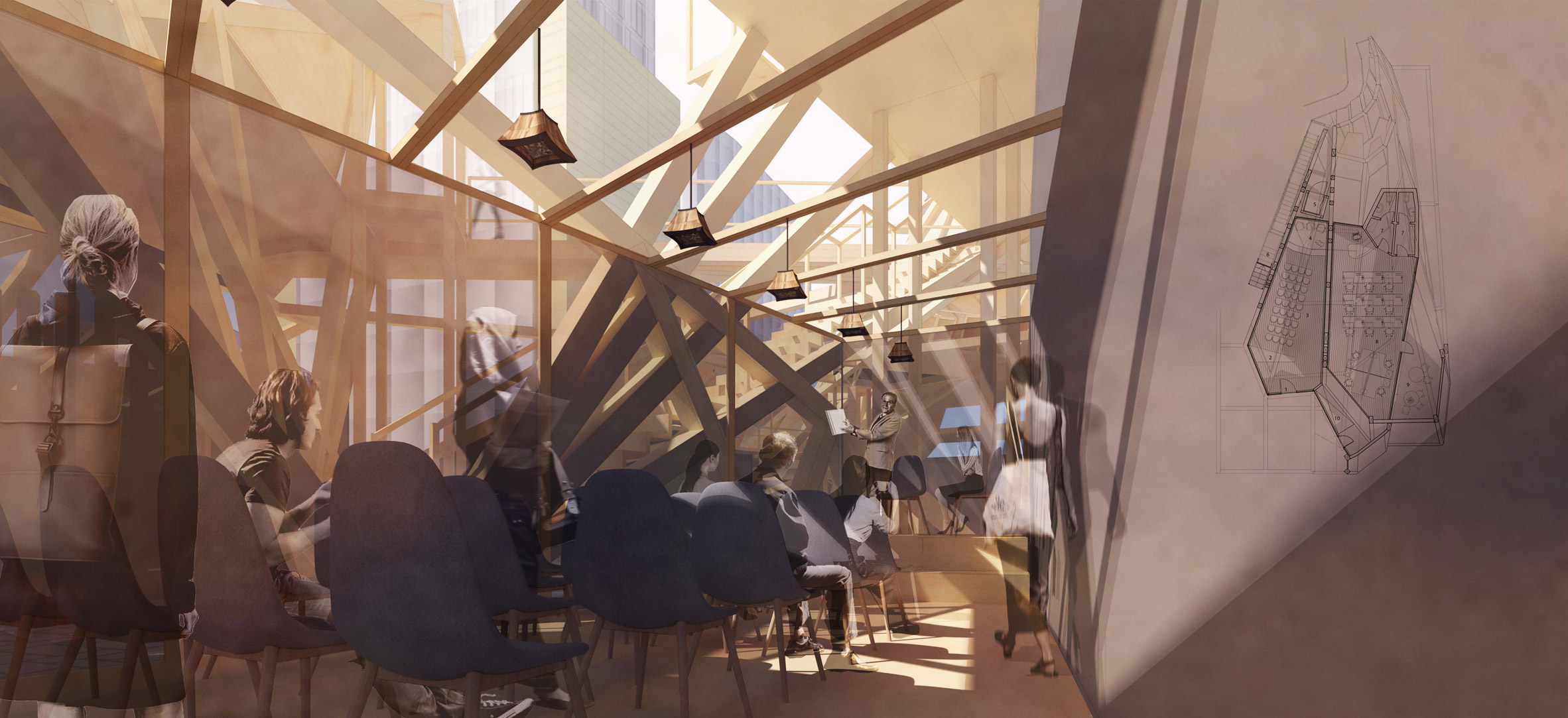
Education for Autonomy by Dola Moni Mukta, year-three BA student
"In a society where the idea of community is vanishing between the vastness of corporate towers, this project proposes a hybrid live-work educational centre located near Canary Wharf. It takes into account the socio-economic factor of both migrant families and aspiring entrepreneurs living in the area.
"The architectural approach delivers protected work and living spaces, formed from a series of separate buildings coupling as counsel for residents in need. The centralised market space, together with the provision of housing, trading opportunities and educational spaces, empower the community through creating an environment for learning and business development for its residents."
Email: dolamukta06@gmail.com
Website: dolamukta06.wixsite.com
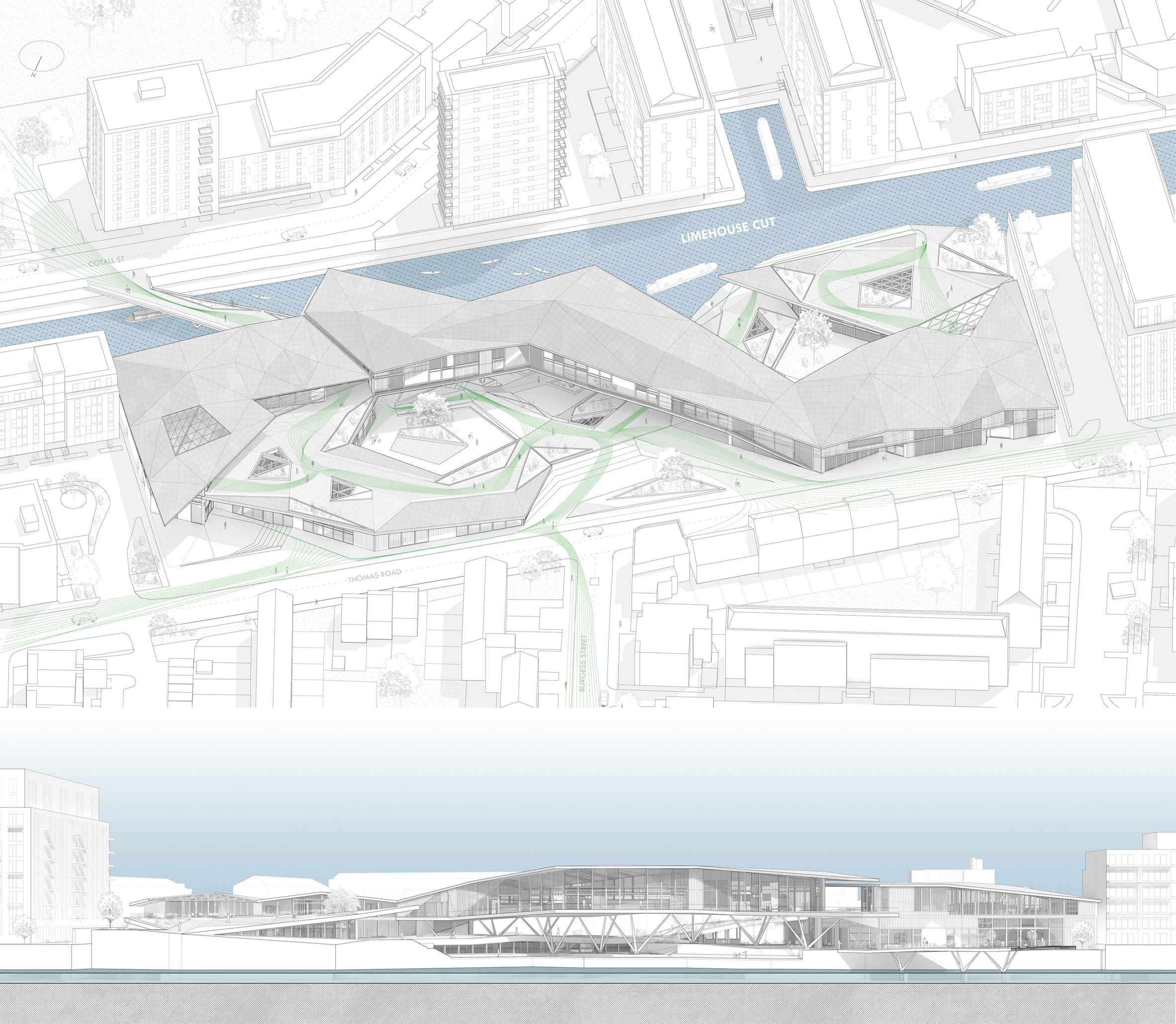
New Urban Formations by Ben Stains, year-two MArch student
"Inspired by the Limehouse Cut's industrial past, this project seeks to reposition manufacturing at the heart of the local community and craft at the heart of emerging manufacturing practices.
"The linear processes involved in creating textiles, turning fibre into yarn and yarn into fabric, are used to inform a new urban landscape shared between industrial, mechanical production lines and an uninterrupted open public realm. This revised manufacturing typology facilitates a direct connection to the local community, reframing the factory as a public space and manufacturing as a civic event."
Email: benstains@gmail.com
Portfolio: behance.net/benstains
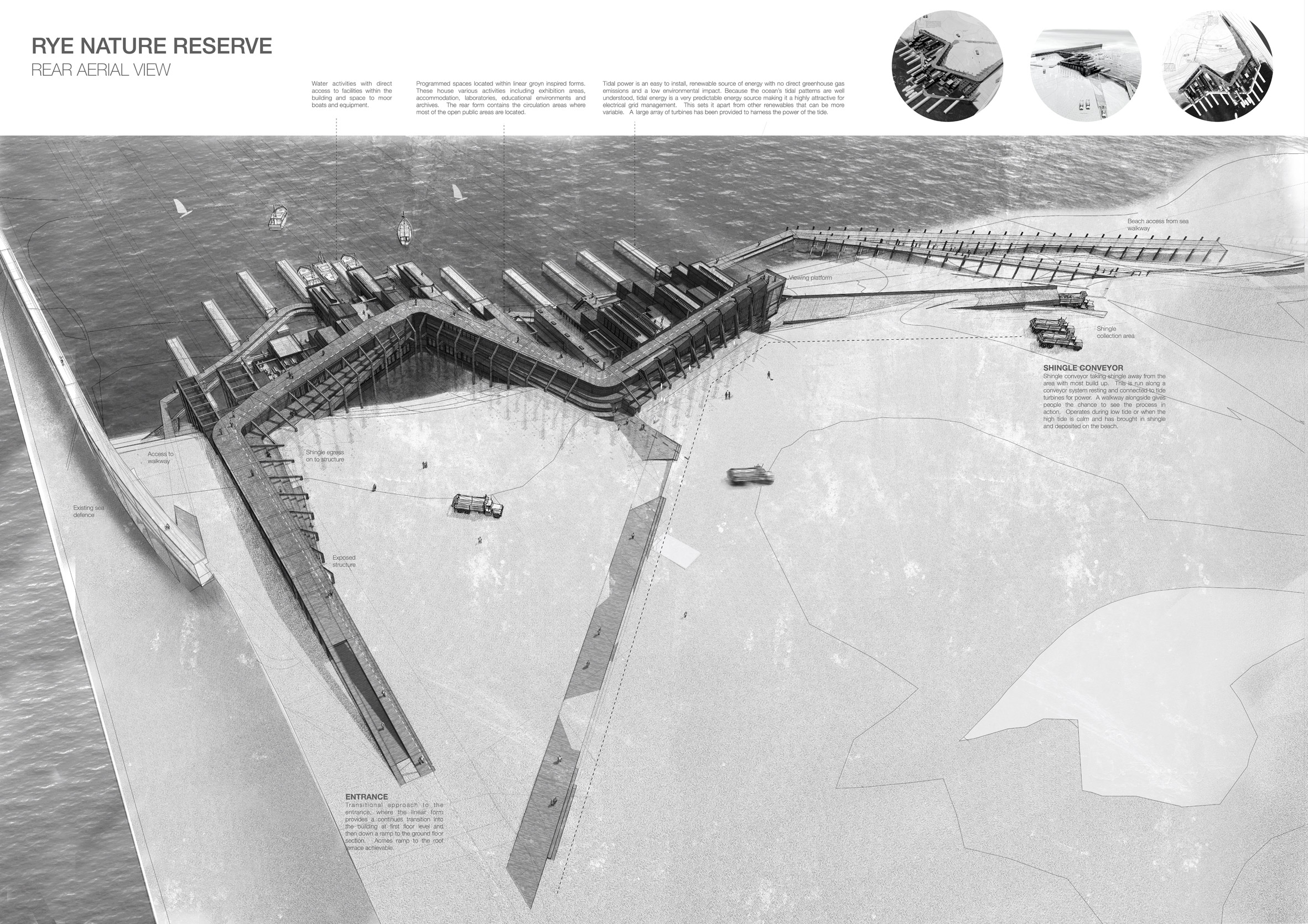
Shaping the Shore by Michael Crook, first-year part-time MArch student
"On the shoreline of the Rye Harbour Nature Reserve, there is a specific place where shingle is deposited by the fast-moving tide before being extracted and removed by vehicular machinery. This excess material is distributed further along the shore, to replenish other areas.
"This place offers an opportunity to promote eco-tourism and automate the shingle removing process through renewable means, while allowing for a proposal inspired by existing truck movements and shingle beach groynes. The proposed infrastructural improvement is combined with a residential and programmatic response, that promotes and considers the surrounding context."
Email: michaelcrook87@gmail.com
Website: michaelcrook.co.uk
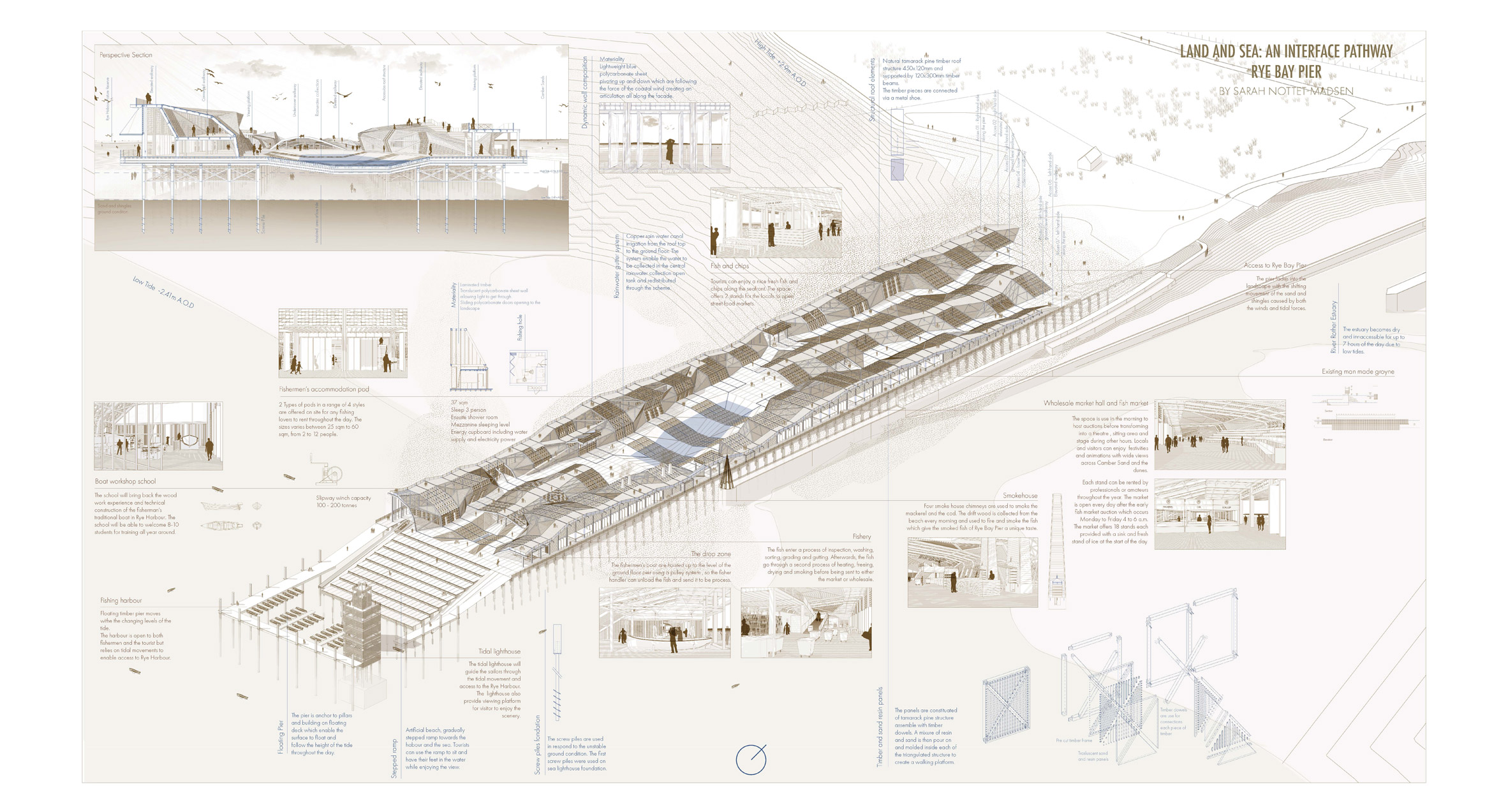
Land and Sea: An Interface Pathway by Sarah Nottet-Madsen, first-year MArch apprentice
"The daily motion of the tides creates unstable and unreliable topography, while strong winds batter the land. Both forces have played a significant role in the conception and structure of this proposal, from the foundation to the shape and the dynamic wall.
"Visitors undertake a journey through a new artificial landscape, which culminates in being confronted by the full majesty of the ocean from a viewing platform and tidal lighthouse. This is intended to be a reflective space where users can contemplate and appreciate the rugged beauty of nature and the English coast."
Email: sarah.nottet-madsen@hotmail.com
Website: sarahnottet.wixsite.com
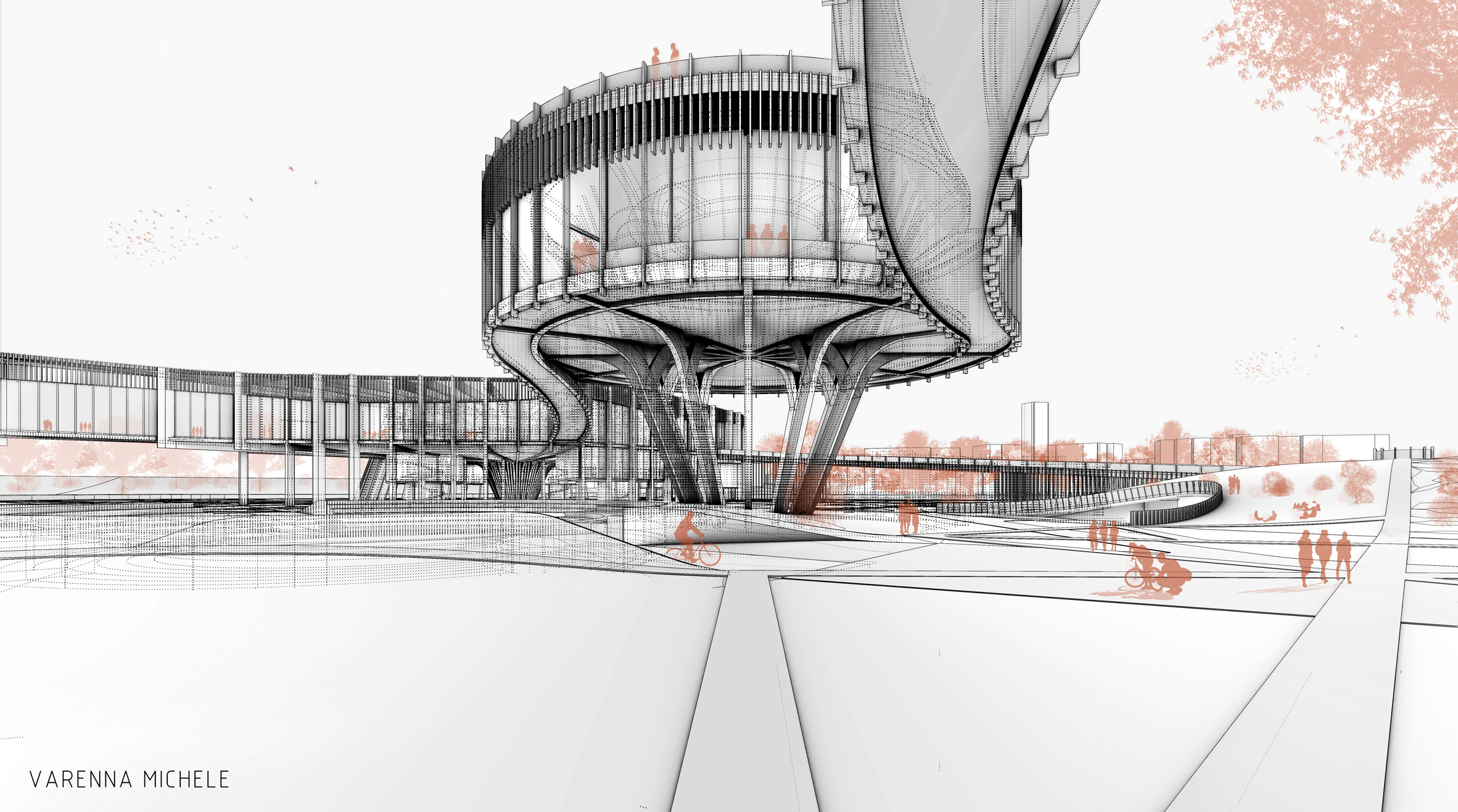
Socios by Michele Varenna, second-year MArch student
"The human brain is unconsciously influenced by architecture, which means it is vital to design the built environment in line with human wellbeing. Representing the idea of the future city, Socios addresses these issues and focuses on integrating sustainable as well as neuroscientific principles.
"Studying the human brain and proxemics could create a higher quality experience of spatial compositions. Through the manipulation of light, colours, geometry and natural vistas, the aim is to reduce stress and create a stronger sense of community."
Email: michelevarenna@gmail.com
Website: michelevarenna.com
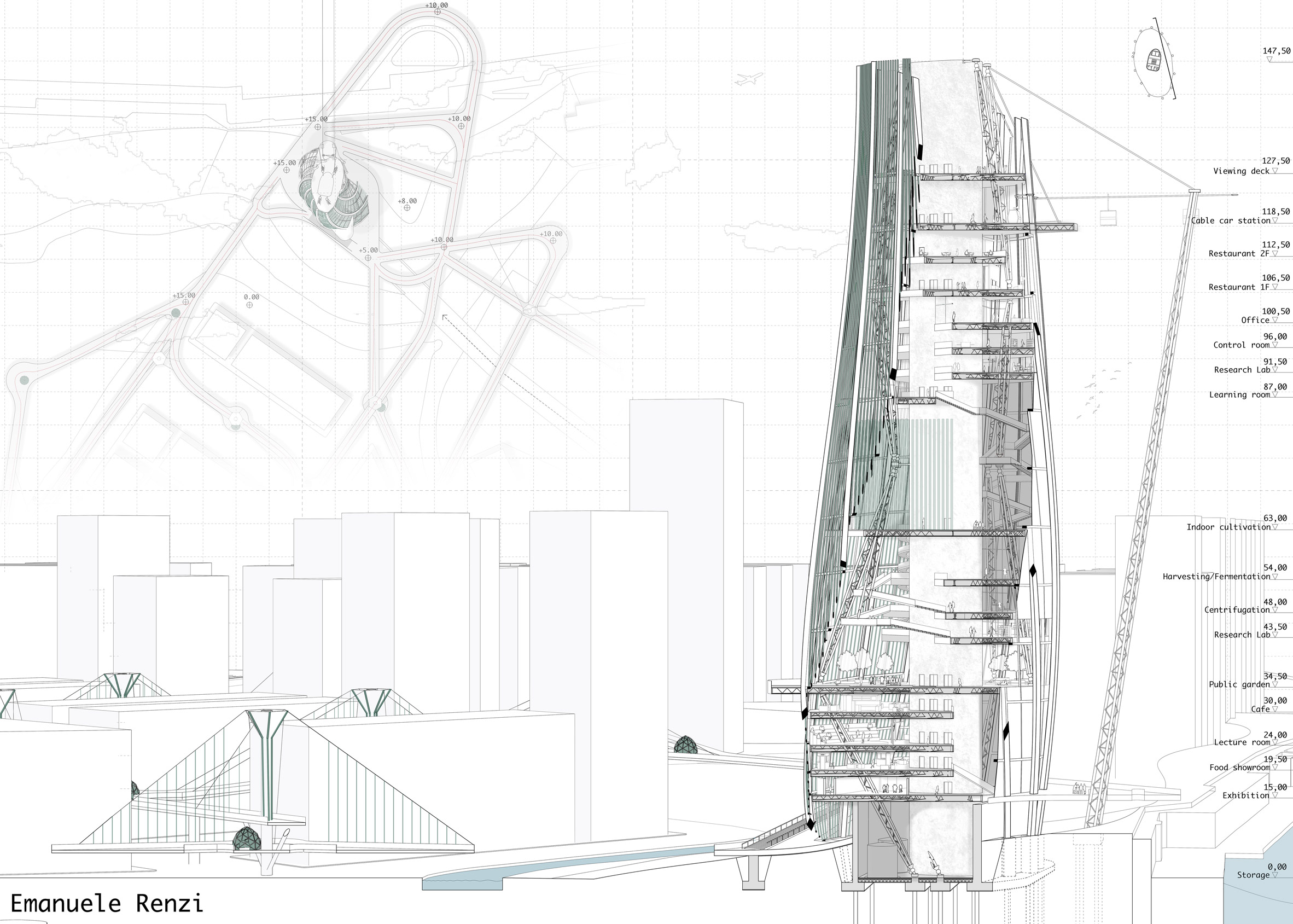
O_Net_City by Emanuele Renzi, second-year MArch student
"O_Net_City is a multi-scale proposal that aims to create a new urban environment, which is able to easily interact with the existing fabric of the city without overpowering it. In order to achieve this, I propose the introduction of an architecture that combines green spaces with multifunctional, high-tech elements.
"We need to use the limited natural resources we have more carefully than we have, and technology can help with this. The building represents the factory of the future and will provide the necessary means for algae biomass treatment, generating different final products like bioplastic and most important the building will power itself via the energy production from biomass."
Email: e.renzi@outlook.com
Website: e-renzi.com
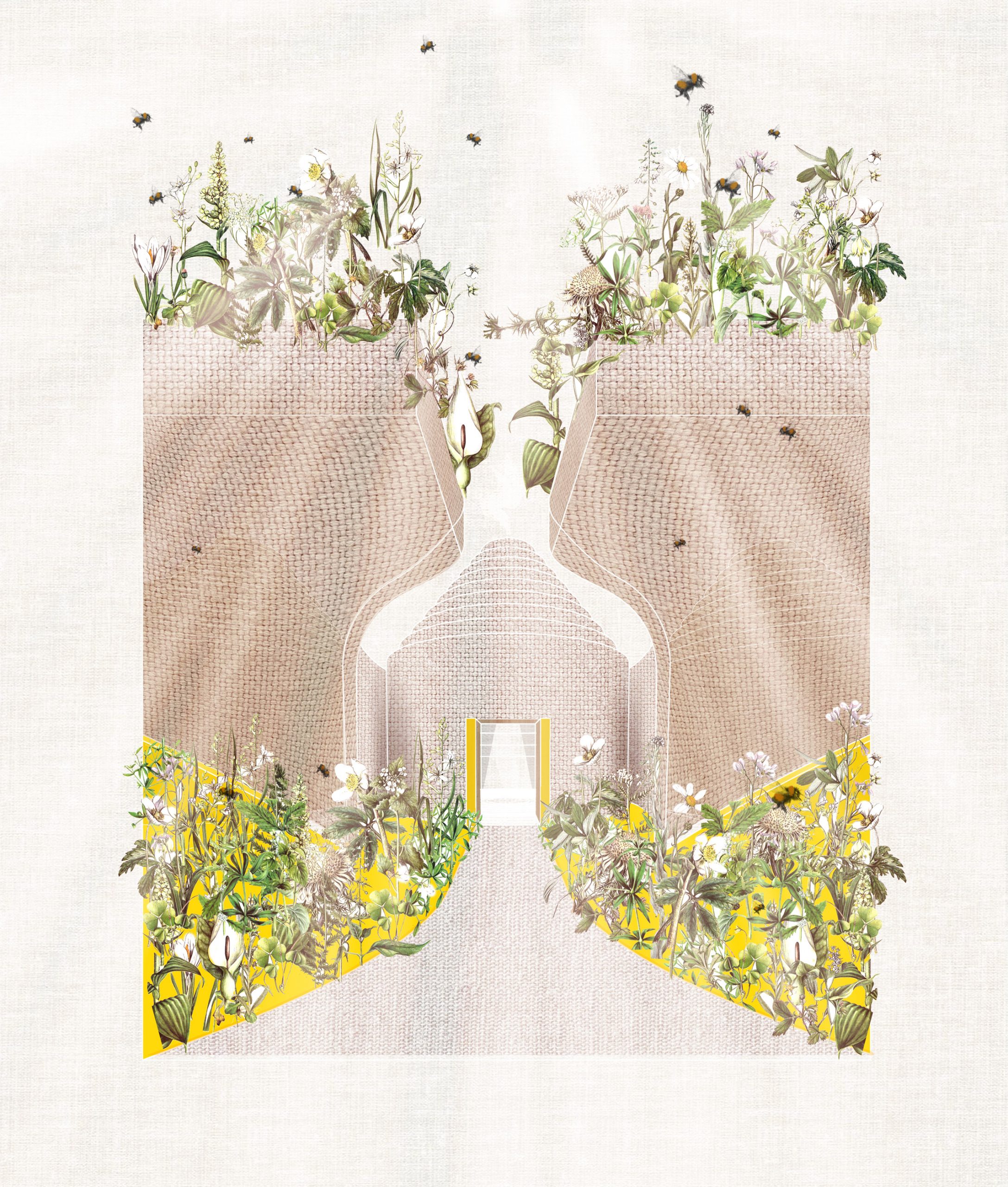
Flax Farm by Will Gains, first-year MArch apprentice
"Since the 1930's, the UK has lost a large portion of its wildflower meadows. This loss of habitat has had a detrimental impact on biodiversity and natural crop productivity. Flax Farm seeks to pioneer the re-wilding programme at Knepp Castle Estate in West Sussex, while also setting a precedent for sustainable agricultural methods further afield.
"By applying research into textile farming, the farm will create a network of sustainably-grown, handwoven bio-textiles, interlaced within the existing landscape. Grass fields will be re-wilded with ribbons of wildflowers and the architectural fabric of the building will seamlessly transition into the surrounding context."
Email: will.gains.architecture@gmail.com
Instagram: @willgainsarchitecture
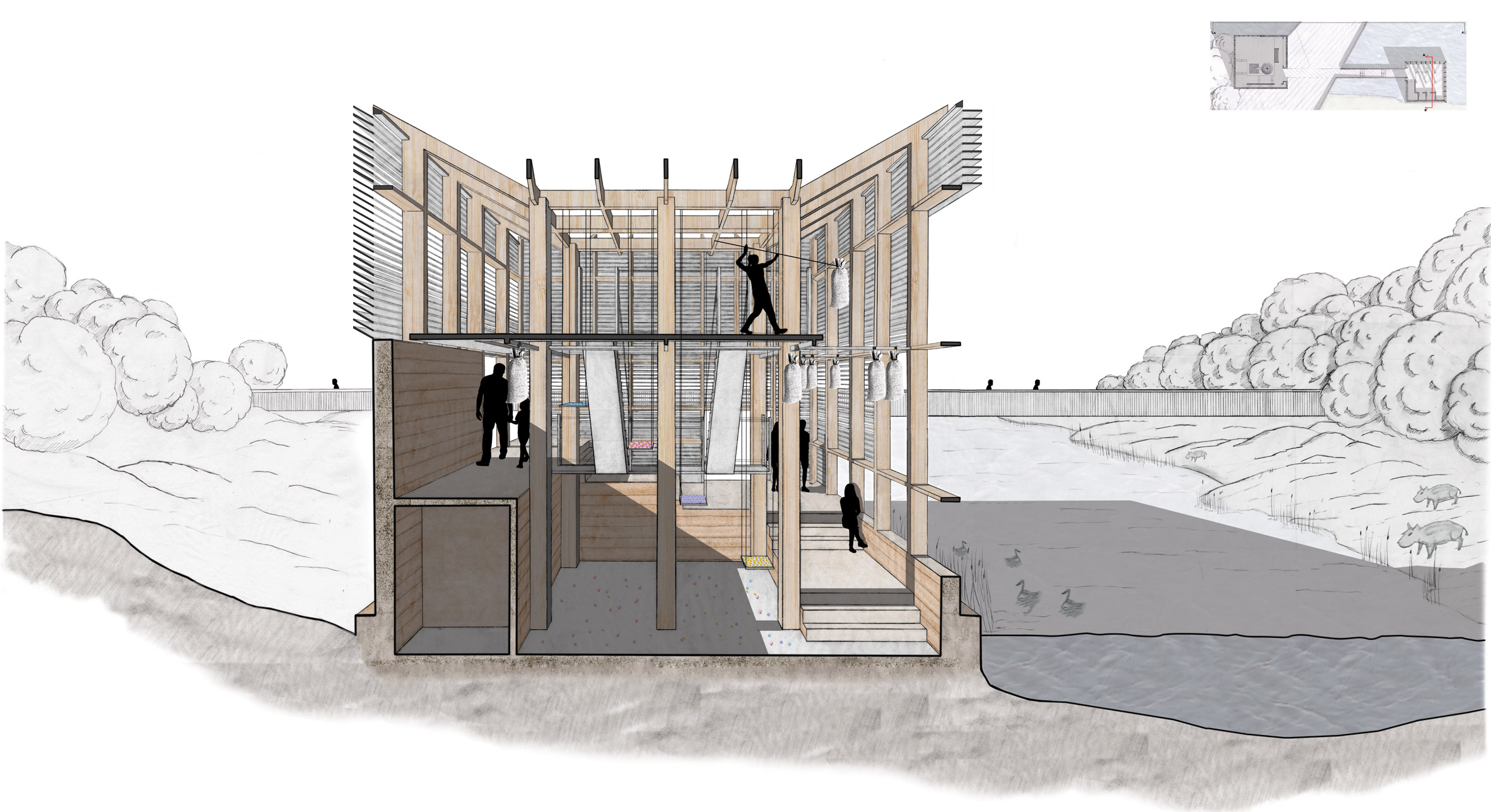
Soma by Oliver Howard, first-year MArch apprentice
"Since the 1930's the UK has lost 97 per cent of its wildflower meadows. My project focuses on the medicinal value of wildflowers and other plants found in Britain's woodlands. Unfortunately, most of us would now struggle to identify five tree types, let alone recognise which plants are edible, antiseptic or pain-relieving.
"In response, I propose a herb-drying store called Soma where visitors can exchange fresh plants and herbs for their equivalent dry weight and learn about the properties of each plant. This project proposes a new symbiotic relationship with our environment through the understanding of nature's healing power."
Email: oliverhoward1991@gmail.com
Website: colemananderson.co.uk
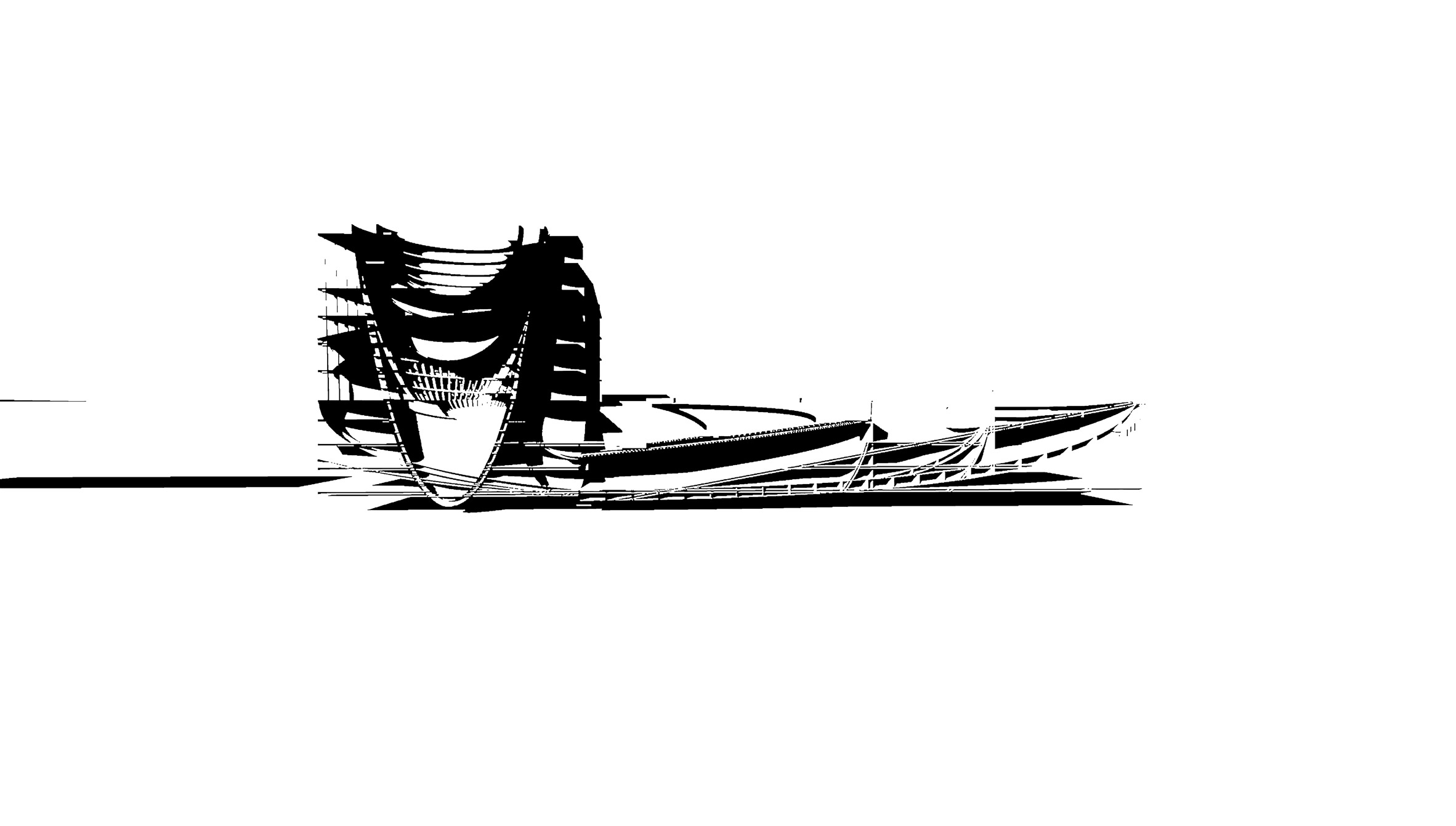
Holistic Light Core by Jack Biggerstaff, second-year MArch student
"The Holistic Light Core aims to manipulate daylight as a dynamic material force, maximising the impact of light on the mental health and wellness of its users. This project is based around an innovative device, which enables light to affect the human body in a positive way.
"Health in the urban contexts is in decline and London is in need of change. By harnessing the power of light, the aim of the Holistic Light Core is to establish a new people's palace within Mayfair, repurposing Saarinen's redundant US Embassy. This project would become a significant rallying point for the promotion of national health and wellbeing."
Email: jack.d.biggerstaff@gmail.com
Website: jackbiggerstaff.co.uk
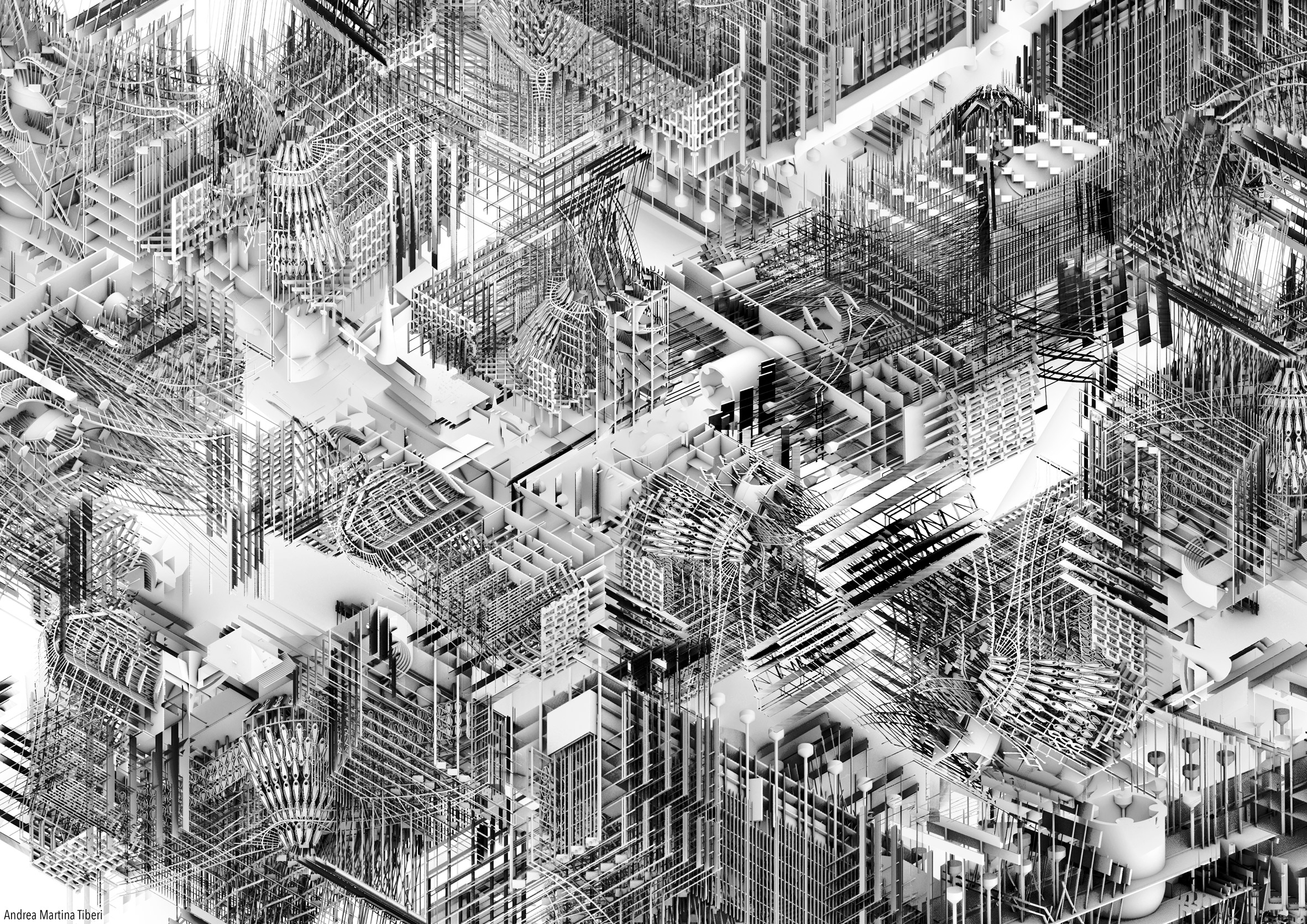
London Time Stocker by Andrea Tiberi, second-year MArch student
"Introducing a time banking system to contemporary Mayfair means embracing equal opportunities and leveraging common interests among people. The London Time Stocker is a forum for knowledge exchange that values time as a form of currency. Users will be able to share skills in the real and virtual space and benefit from interactions.
"Manipulating light and data in an interplay between art and science, LTS embodies a people's palace of the 21st Century. Its mission is to promote diversity, produce social capital and fight loneliness."
Email: andrea.m.tiberi@gmail.com
Website: andrea-m-t.com
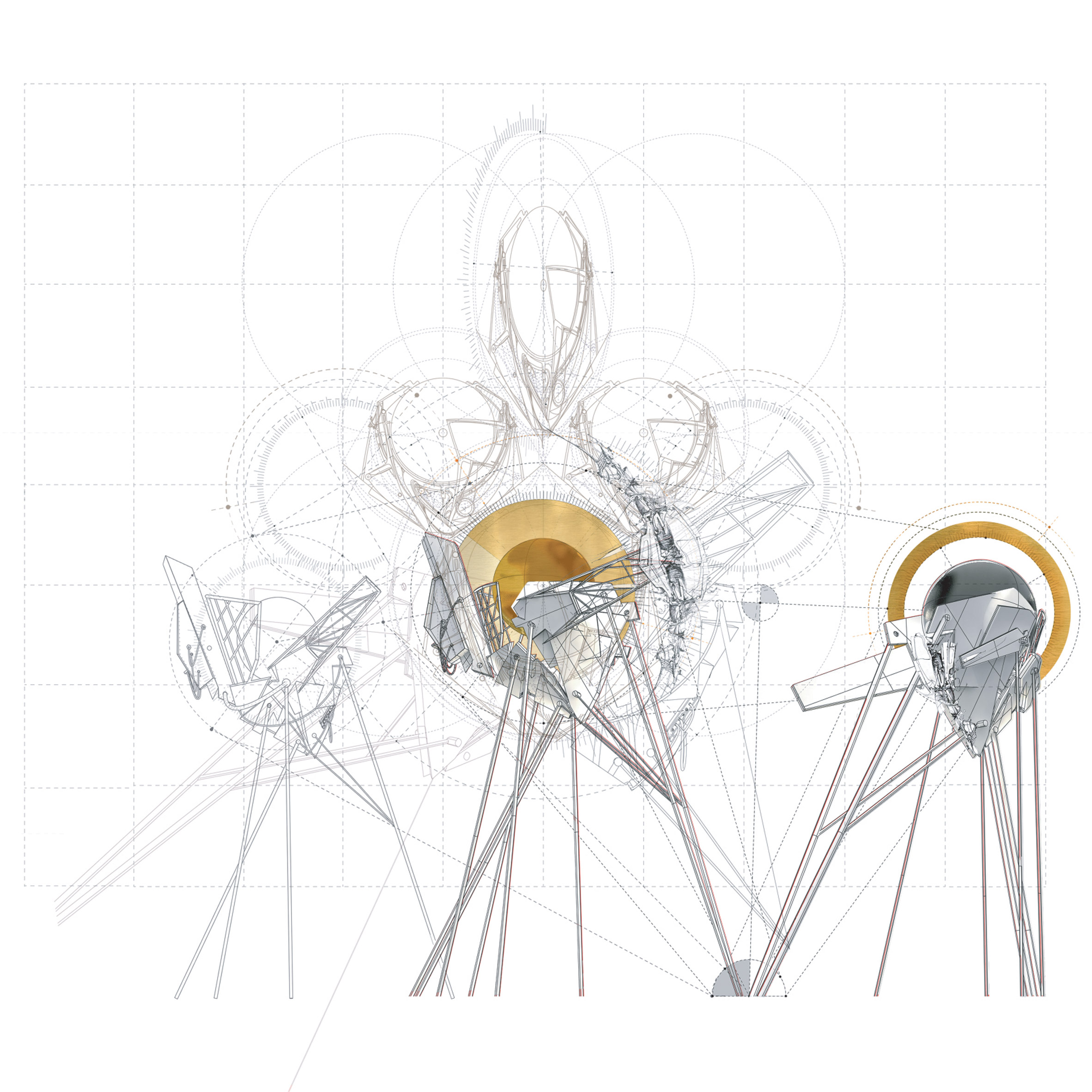
Star Energy: Grosvenor Square by Yianna Moustaka, second-year MArch student
"This project focuses on the power and necessity of sunlight and the beauty of darkness, in order to promote the Dark Sky Movement. This is a worldwide campaign to reduce light pollution, preserve the natural night sky and celebrate stars in the city.
"The aim of this proposal is to manipulate daylight as a dynamic material, giving purpose and expression to architecture while maximising its positive impact on psychological health. I propose a mechanism in the form of a light sucker, a cluster of spheres that absorb and store sunlight and release it at will. "
Email: yianna.m.3@gmail.com
Website: yianna.studio
Virtual Design Festival's student and schools initiative offers a simple and affordable platform for student and graduate groups to present their work during the coronavirus pandemic. Click here for more details.
The post South Bank University students rethink London's architecture appeared first on Dezeen.
from Dezeen https://ift.tt/2YEUybw
No comments:
Post a Comment